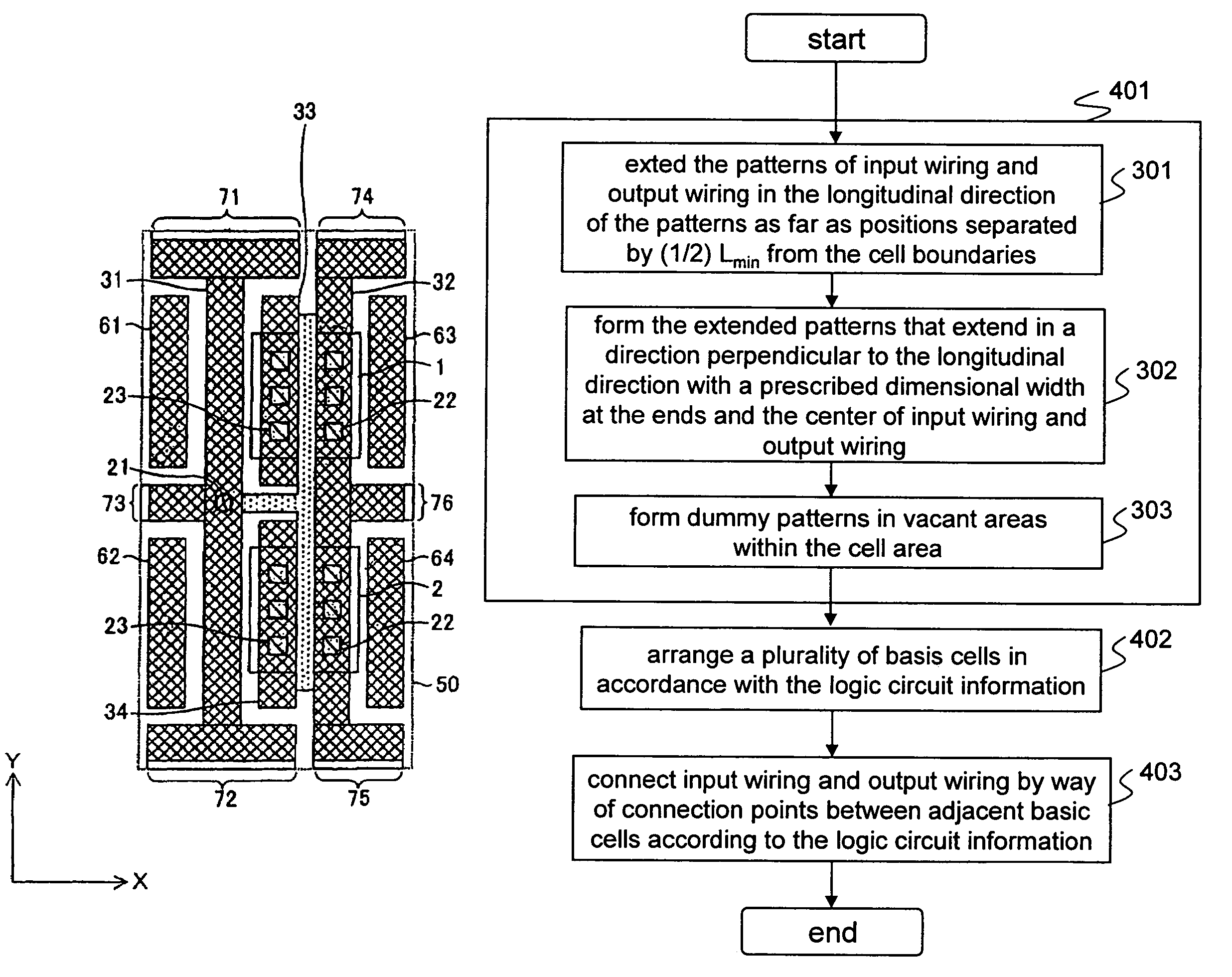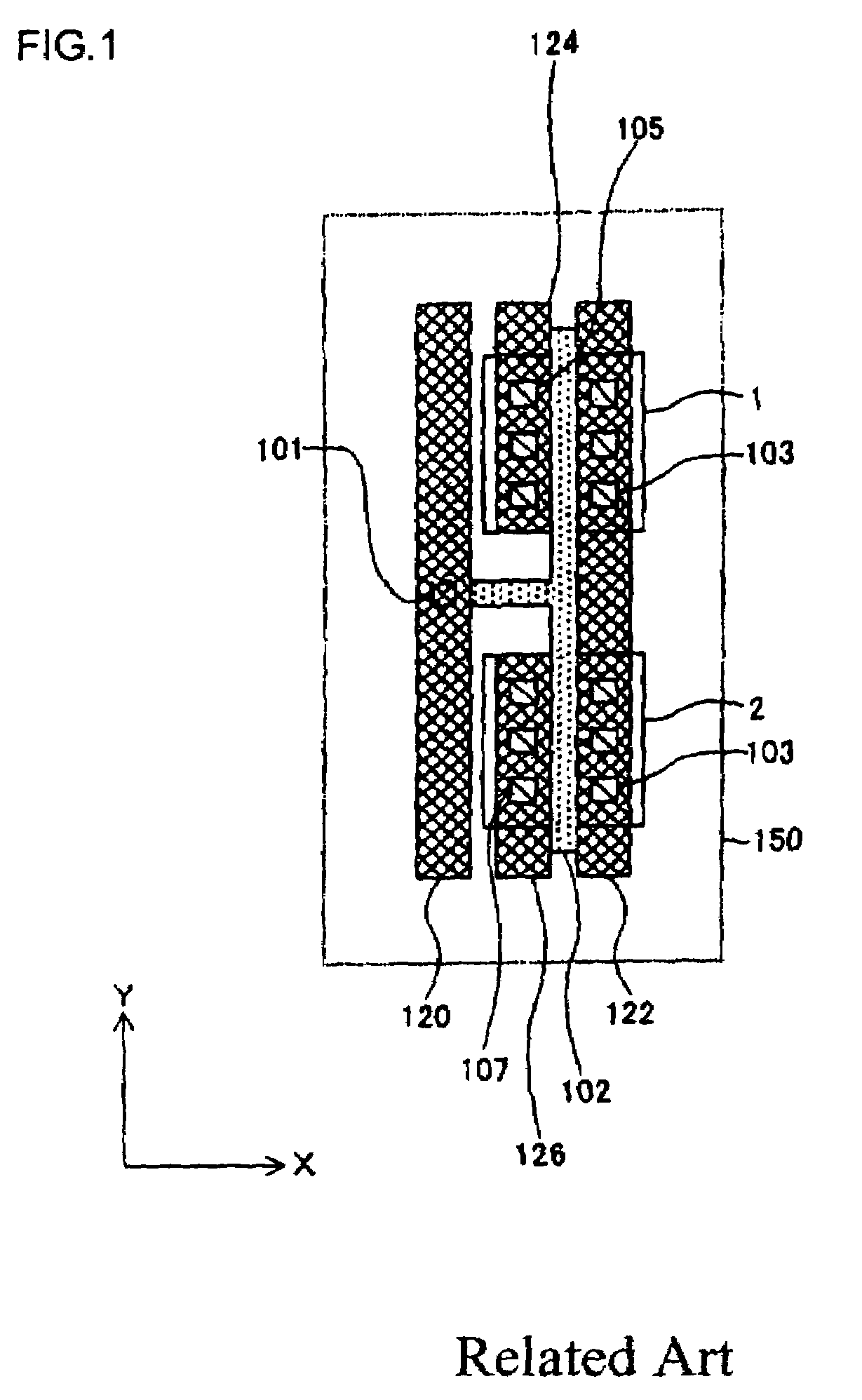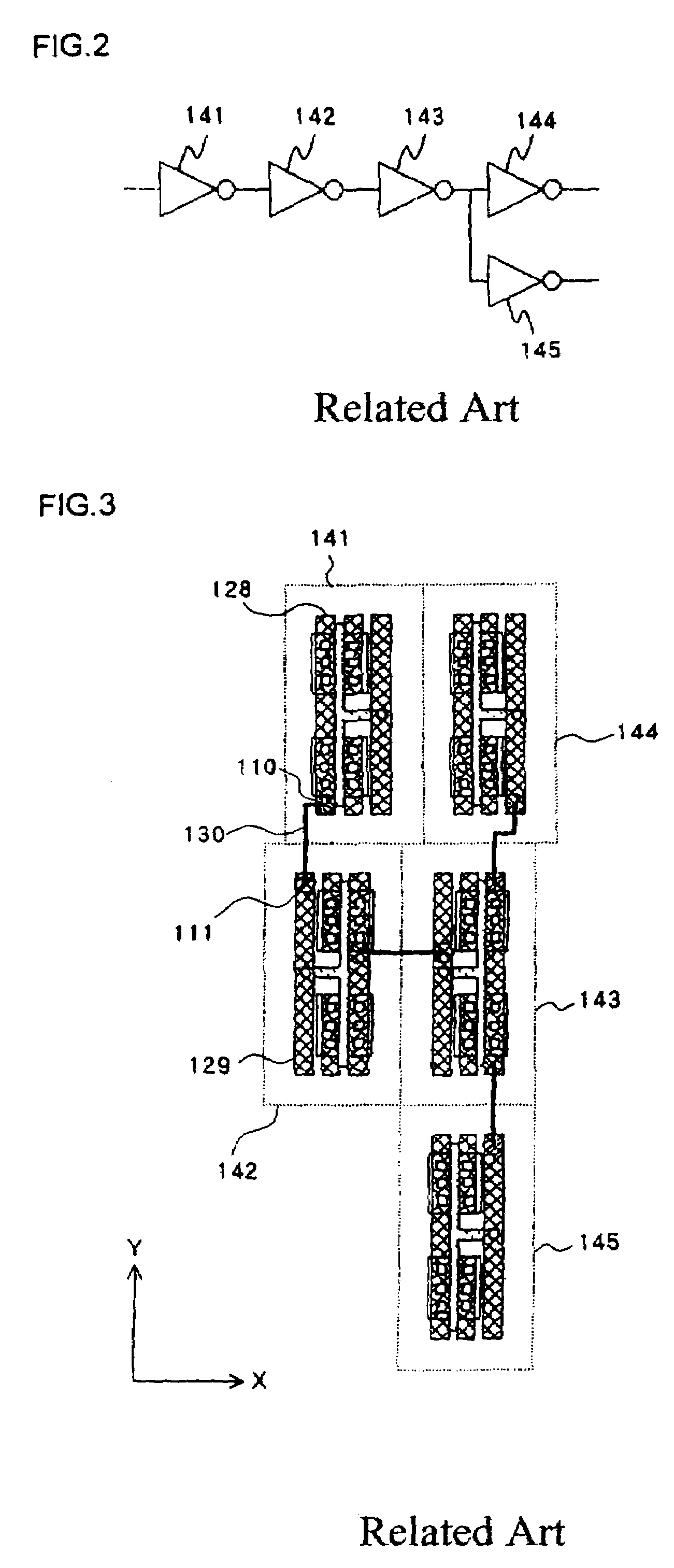Basic cell design method for reducing the resistance of connection wiring between logic gates
a technology of logic gates and design methods, applied in the field of basic cell design methods, can solve the problems of increasing the chip size, high resistance of the connection between adjacent cells, and several layout methods, and achieve the effect of reducing the resistance of connection wiring
- Summary
- Abstract
- Description
- Claims
- Application Information
AI Technical Summary
Benefits of technology
Problems solved by technology
Method used
Image
Examples
first working example
[0042]Explanation first regards the design device used in the design method of a basic cell and layout in the present working example.
[0043]FIG. 4 is a block diagram showing an example of the configuration of the design device used in the present working example.
[0044]Design device 10 is an information processor such as a CAD tool, a personal computer, or a workstation. As shown in FIG. 4, design device 10 includes: memory unit 11 for storing logic circuit information and information such as design rules; control unit 12 for carrying out operations for the design of a basic cell and layout; output unit 13 for supplying the design results; and console unit 14 by which the designer enters instructions as input. Control unit 12 includes: CPU 16 for executing prescribed processes in accordance with programs; and memory 17 for storing programs. The design procedure of a basic cell is written in a program. The content of this design procedure of a basic cell will be explained later. Outpu...
second working example
[0071]Explanation next regards the configuration of a basic cell of the present working example with reference to the accompanying figures. As in the first working example, the logic gates are assumed to be inverters.
[0072]FIG. 8 shows the configuration of a basic cell in the present working example. In addition, the same reference numerals are used for configurations that are identical in the first working example, and detailed explanation of these configurations will be omitted. As in FIG. 5, the horizontal direction is the X-axis direction, and the vertical direction is the Y-axis direction in FIG. 8.
[0073]In the present working example, first-layer wiring 35 shown in FIG. 8 is input wiring Tin, and first-layer wiring 36 is output wiring Tout. As in the first working example, first-layer wiring 35 and first-layer wiring 36 have patterns that extend as far as positions separated by (½) Lmin from cell boundaries in the Y-axis direction. The difference with the first working example...
third working example
[0085]Explanation next regards the configuration of a basic cell of the present working example with reference to the accompanying figures. As in the first working example, logic gates are assumed to be inverters.
[0086]FIG. 11 shows the configuration of a basic cell in the present working example. The same reference numerals are conferred to configurations identical to those of the first working example, and detailed explanation of these configurations is omitted. As in FIG. 5, the horizontal direction is the X-axis direction, and the vertical direction is the Y-axis direction in FIG. 11.
[0087]In the present working example, first-layer wiring 37 shown in FIG. 11 is input wiring Tin, and first-layer wiring 38 is output wiring Tout. The difference between the present working example and the first and second working examples is the greatest possible reduction in the size of the patterns of input wiring Tin and output wiring Tout. First-layer wiring 37 is of a size that allows a patter...
PUM
 Login to View More
Login to View More Abstract
Description
Claims
Application Information
 Login to View More
Login to View More - R&D
- Intellectual Property
- Life Sciences
- Materials
- Tech Scout
- Unparalleled Data Quality
- Higher Quality Content
- 60% Fewer Hallucinations
Browse by: Latest US Patents, China's latest patents, Technical Efficacy Thesaurus, Application Domain, Technology Topic, Popular Technical Reports.
© 2025 PatSnap. All rights reserved.Legal|Privacy policy|Modern Slavery Act Transparency Statement|Sitemap|About US| Contact US: help@patsnap.com



